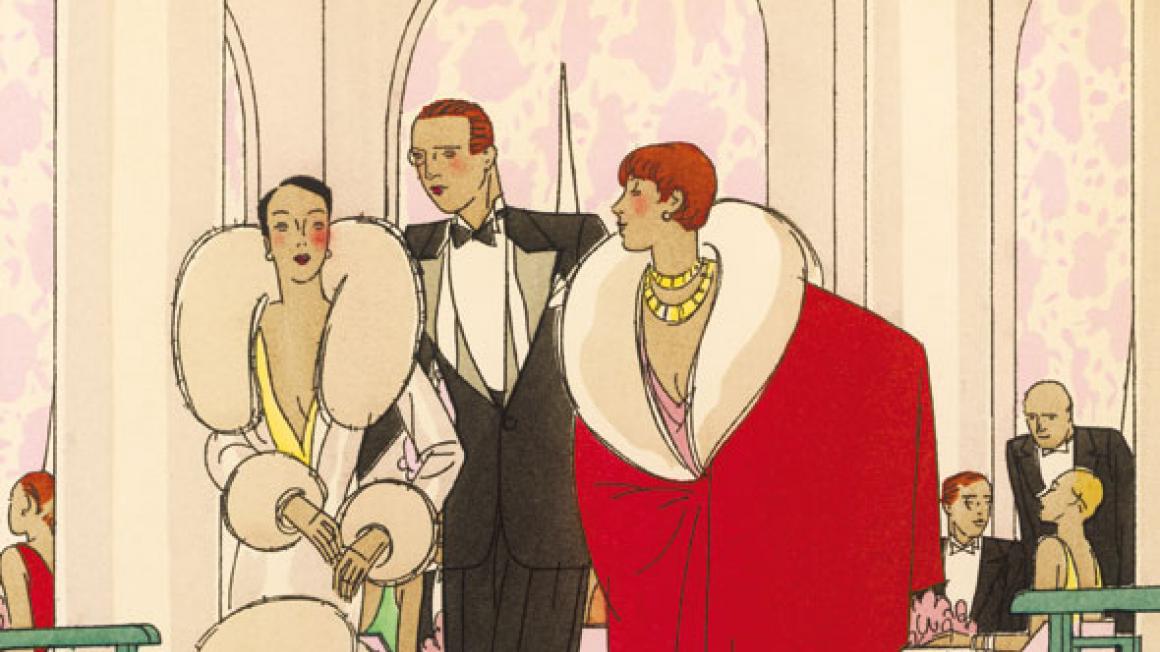‘Please take a seat, madam’
In 1674, a group of ladies organised a petition against the sale of coffee, which they believed would render their menfolk impotent, and their offspring ‘dwindle into a succession of apes and pigmies and distract them from work’. And despite Moll King running the most famous coffee house in 18th-century London, women were still barred from them.
In the 18th century, women were also excluded from dining clubs, which were all the rage. Elizabeth Montagu struck out by holding breakfast gatherings of the Blue Stocking Club for women, at which eminent figures such as David Garrick would give a talk. After Waterloo, men headed for the clubs in St James’s, and women again were ‘most dreadfully neglected’.
Meanwhile, in Paris, there were 600 restaurants, which welcomed lady diners and became the city’s most glamorous rendezvous.
It wasn’t until the opening of the Westminster Palace and Langham hotels in the 1860s that women found a public place to meet. In 1865, the Epicure’s Year Book recommended the Burlington for ladies; the East Room at the Criterion, which opened in 1873, was one of the first dining rooms specifically allocated ‘that mankind should bring beautiful womankind there to eat things delicate’.
The new breed of restaurateurs, such as Daniel Nicols at the Café Royal, realised ladies not only opened up a whole new market but would attract men, especially before a visit to the new West End theatres and music halls. In 1879, Charles Dickens junior was able to write in his Dictionary Of London: ‘Ladies shopping without a male escort, requiring luncheon, can safely visit any of the great restaurants.’
Royalty led the charge. Edward, Prince of Wales, might have loved shooting and sailing but his stage for illicit rendezvous was the dining table. And César Ritz was his favourite host, first at the Savoy from 1889 and then the Carlton, from 1899.
The arrival of women on the restaurant scene in the last quarter of the century was as much a display of economics as emancipation. The dinner party had become an entertainment in itself and not just a prelude to something else, but the new service à la russe – our current system of dish following dish – put domestic staff under extreme pressure. A budget of 16 shillings a head, including wine, was thought about right for a dinner party at home. Given the standard price of dinner in the West End was half a guinea, it was cheaper and more glamorous to entertain in restaurant-land.

In 1901, The Caterer was able to report: ‘The club dinner is not what it was. Men don’t dine at their clubs nowadays; they go with their wives, or with the wives of others, to partake of the restaurant dinners.’ There were also restaurants in the new department stores and ladiesonly restaurants, like Dorothy’s in Oxford Street, as well as 34 vegetarian restaurants. Simpson’s opened a ladies dining room in 1903 where Henry Wilcox had lunch with Margaret Schlegel in Howards End. Respectability was supreme. Joseph Lyons opened his first tea shop in 1894 at 213 Piccadilly, 50 yards up from Fortnum & Mason. By 1900, there were 37 Lyons tea shops in London to cope with its 590,000 lady office workers. By 1914, there were 180 across the UK.
A second Prince of Wales led the frolics after the First World War. Before Wallis Simpson, his leaderene was Mrs Dudley Ward, who shocked guests at the Embassy Club by arriving in a backless frock, her bare arms surrounded by wrist chains and bracelets. The Savoy was first to make dancing with dinner fashionable, even raising the dance floor on hydraulic jacks by 27 inches. With the exception of Claridge’s, the Café Royal and the Boulestin, all large restaurants and hotels followed suit, and two bands a night were offered.
At first, the war barely dampened the fun. Henry ‘Chips’ Channon recorded a visit to the Dorchester in November 1940: ‘London lives well. I’ve never seen more lavishness, more money spent, or more food consumed than tonight.’
Lady Diana Cooper, who stayed in the hotel for the duration, wrote: ‘We semi-dress for dinner much more smartly than we would in days of peace.’ Although eating out stayed ‘off-ration’ during the war to encourage massed catering, the shortage of supplies put whale meat and spam on the menu. Elizabeth David’s recipes were the only light at the end of the post-war gastronomic tunnel. Amateurs started opening up restaurants in South Kensington and Chelsea, offering what Osbert Lancaster called ‘King’s Road Mediterranean’. Alfred and Ruby opened The Ox On The Roof in 1950; Le Matelot, La Bicyclette and La Chanterelle followed. The provinces responded with The Hole In The Wall in Bath and The Walnut Tree, near Abergavenny.
There was a new informality about these restaurants, with their fishing nets and Chianti bottles, which encouraged Mario and Franco’s trattorie and an entire Spaghetti Tree of raucous Italian restaurants in Soho and beyond. Ladies were now firmly out to lunch.
Growing Up In Restaurants: The Story Of Eating Out In Britain From 55BC To Nowadays, by James Pembroke, is published by Quartet Books, priced £17.50.


